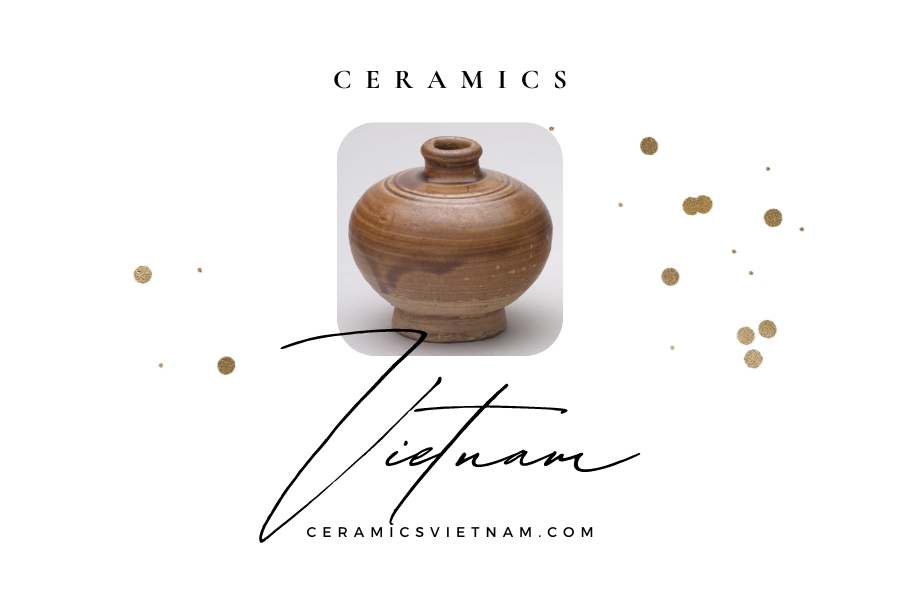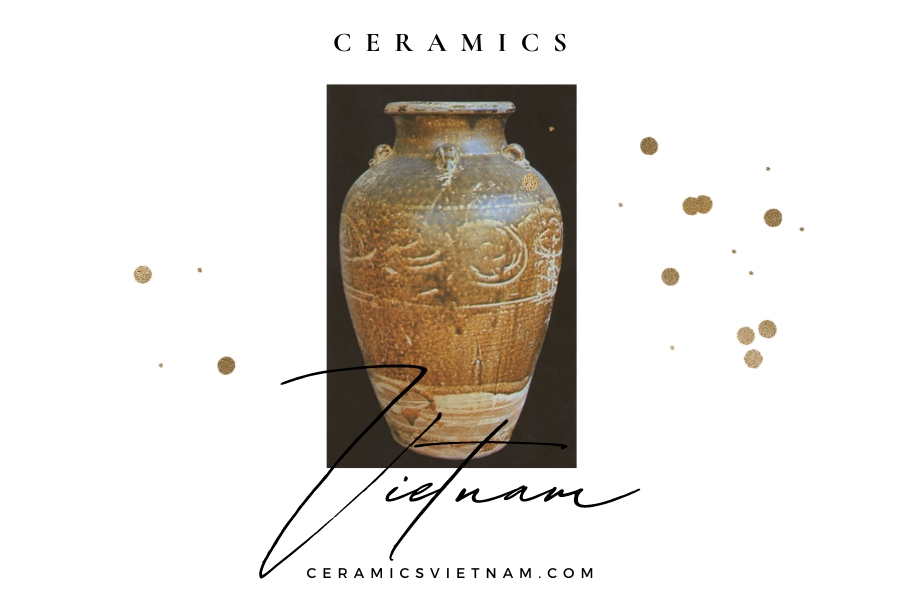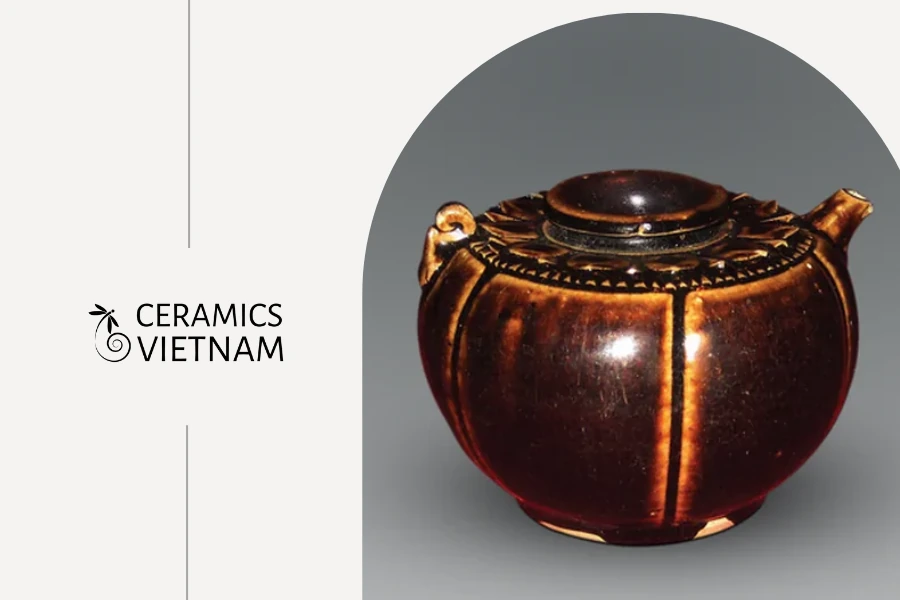Vietnamese ceramics have a long history spanning thousands of years, featuring a diverse range of pottery. Among them, there are highly acclaimed ceramic types known for their artistic beauty and practical applications. One notable example is Brown-glazed ceramics.
Vietnamese ceramics

Brown-glazed ceramics – a distinct traditional line of ancient Vietnamese pottery
Vietnamese ceramics only include pottery designed or produced in Vietnam. Vietnamese ceramics have a long and rich history that spans thousands of years, encompassing a significant period before the Northern domination, as evidenced by archaeological findings.
Many Vietnamese ceramics post the Northern domination period were heavily influenced by Chinese ceramics, but they have developed significantly to embody distinctive Vietnamese characteristics. Vietnamese ceramic artisans have skillfully combined local elements with Chinese influences. They have also experimented with both basic designs and unique styles, incorporating distinctive features from other cultures such as Cambodia, India, and Champa.
The history of Vietnamese ceramics reflects a unique fusion of indigenous and Chinese influences, as well as experimentation with various forms and styles. Despite the substantial impact of Chinese ceramics, Vietnamese ceramic artists have succeeded in surpassing these influences to create ceramics with a distinct Vietnamese identity
Ceramic glaze
Lam Glaze (Men Lam)
- Origin: Since the 14th century.
- Characteristics:
- Combined with cobalt oxide to achieve a base color, ranging from blue-gray to dark blue.
- Covered with a glossy white glaze, highly vitrified after firing.
- Used for brush-painting techniques on various ceramic pieces.
- Applied to depict landscapes, floral patterns, dragons, and other motifs.
- In the 19th century, combined with crackle glaze and used for decorative painting on various ceramic items.
Brown Glaze (Men Nâu)

Brown-glazed ceramics – a distinct traditional line of ancient Vietnamese pottery
- One of the Earliest Glazes: Used since the 14th century.
- Characteristics:
- Brown glaze intensity depends on ceramic bone color.
- Initially applied to decorative items along with a white ivory background glaze.
- Transformed into a golden-brown hue by painting on a layer of white ivory glaze.
- Combined with jade glaze and ivory white glaze, creating different shades.
- Used extensively in traditional manners in the 18th century and continued into the 19th century.
- In the 19th century, transitioned into glossy glaze, also known as mottled glaze.
Ivory White Glaze (Men Trắng/Ngà)
- Characteristics:
- Takes on a yellowish ivory hue when fired at high temperatures, occasionally appearing in grayish-white or milky-white tones.
- Used to overlay decorations on jade and brown glazes.
- Applied to incense burners, vases, jars, and statues.
- Reached its pinnacle in the 17th century with raised decoration techniques.
- In the 18th and 19th centuries, still used alongside raised decorations, exhibiting thinness, refined ceramic bones, and high firing temperatures.
Jade Glaze (Men Rạn)
- Prominent Usage: From the 14th to the 19th century.
- Characteristics:
- Used alongside ivory white and brown glazes, contributing to the unique Tri-color style in the 16th-17th centuries.
- Applied to various ceramic items, including lamp bases, incense burners, and statues.
- Exhibits a light hue and was used on lamp bases, lotus-shaped incense burners, and other decorative patterns.
Inscriptions (Minh Văn)
- Characteristics:
- Often expressed through engraved or written characters in lam glaze beneath ivory white glaze.
- Some inscriptions specify the production year, full name, hometown of the creator, and the name of the person commissioning the work.
- Inscriptions provide valuable information about the artisans, the time of creation, and sometimes the commissioner.
Brown-glazed ceramics – a distinct traditional line of ancient Vietnamese pottery

Brown-glazed ceramics – a distinct traditional line of ancient Vietnamese pottery
Brown-glazed ceramics are meticulously crafted pottery with a thick clay base, adorned with brown glazes either as decorative elements on an ivory glaze background or covering the entire piece.
Ceramic experts unanimously use the terms “Brown-glazed ceramics” or “Brown-glazed pottery” to describe a type of pottery adorned with brown glazes or entirely covered in brown glaze. Brown-glazed ceramics fall into the category of thick, coarse, and heavy stoneware, fired at temperatures ranging from 1000 to 1300 degrees Celsius. The brown color is achieved through locally sourced materials, such as stone ores, ground into brown glaze powder. This glaze is then mixed with various additives, primarily composed of clay, and iron oxide. After firing in kilns at temperatures exceeding 1300 degrees Celsius, various shades of brown are produced, including coffee brown, hazel brown, and mink brown.
According to historical records at the National History Museum, during the late 11th century and early 12th century, following the defeat of the Song invaders, the Ly Dynasty played an active role in building an independent feudal state. By the end of the 11th century, Dai Viet (ancient Vietnam) witnessed significant economic development, particularly in agriculture and handicrafts, notably in the traditional craft of pottery. During the Ly Dynasty, Brown-glazed ceramics became prevalent and reached its peak during the Tran Dynasty in the 13th to 14th centuries, earning the nickname “Tran-era pottery,” similar to the designation for the Ly-era green-glazed ceramics.
In terms of decoration, various techniques are employed on Brown-glazed ceramics, utilizing brown and white glazes. Some pieces incorporate raised relief, creating focal points on the body, shoulder, or lid. Most Brown-glazed ceramics are created using the technique of scraping the stoneware surface after applying the base glaze to form decorative patterns. Skilled artisans then use brushes to paint brown patterns on the scraped areas. Alternatively, patterns may be etched onto the product on a glazed background. The white glaze on the stoneware surface often develops natural cracks or fissures, creating unique crackled patterns. Towards the end of the Tran Dynasty into the early Le Dynasty, ceramics with painted brown designs appeared, followed by the application of glaze on top. The decorative motifs vary, encompassing themes from Buddhism to daily life and nature, including flora and fauna.
Since its inception and throughout its development, Brown-glazed ceramics have exhibited immense diversity. Ranging from decorative items to religious artifacts and household goods, these ceramics have left an indelible mark. Today, an array of products, such as teapots, jars, bowls, vases, lamps, pedestals, pots, cups, incense burners, and sculptures of lions and cats, showcase the versatility of Brown-glazed ceramics. Over a span of more than 200 years, the Brown-glazed pottery, though not a lengthy period in the history of Vietnamese ceramics, has contributed significantly to the cultural, historical, and artistic heritage. It stands as a unique and traditional line of ancient Vietnamese pottery, unmistakably distinguished from any other ancient pottery worldwide.














Leave a reply